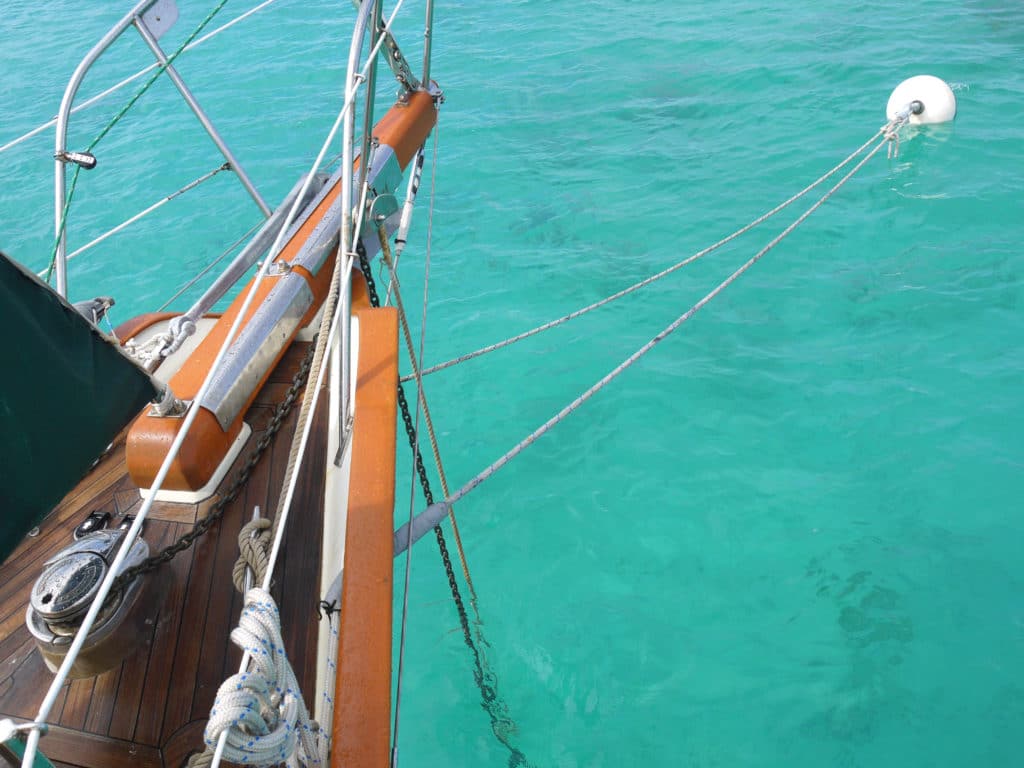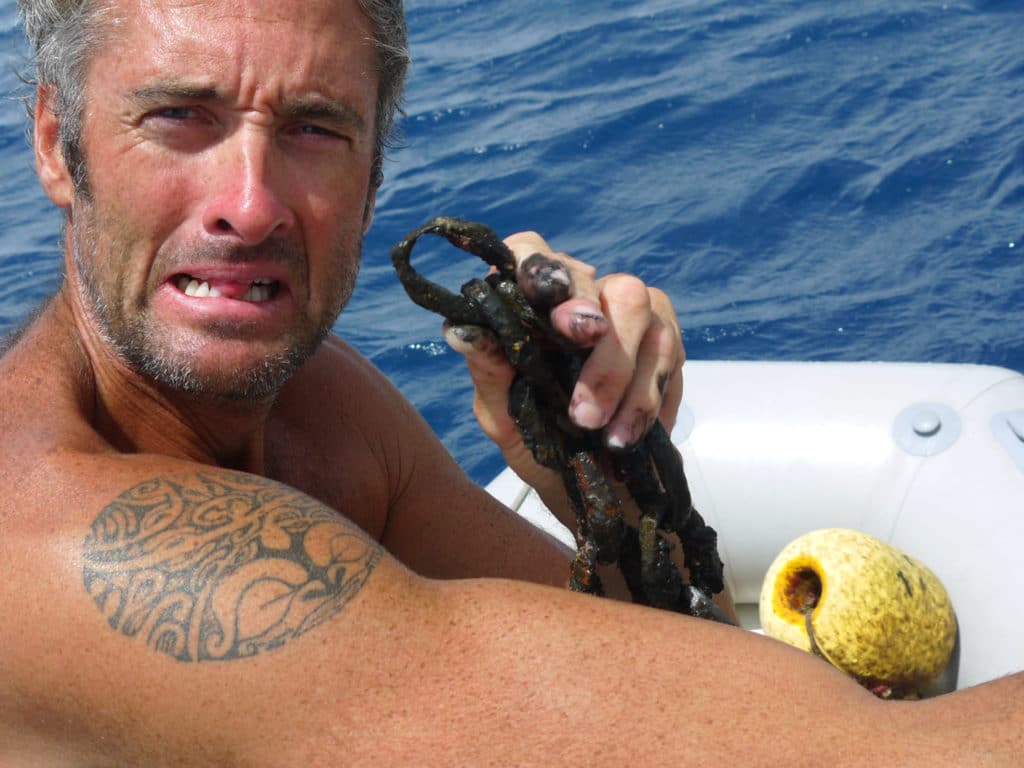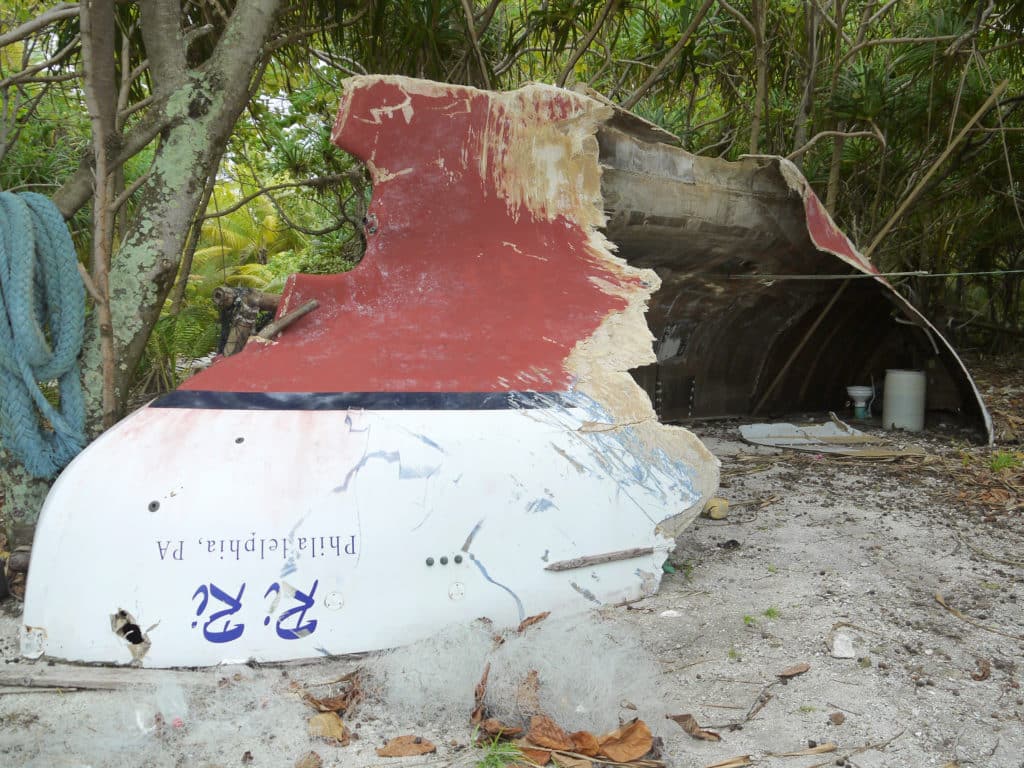
We were clinging to the side of an ancient volcano, hanging on to the very edge of a mountain that fell away under our keel to a seabed that rested over 13,000 feet below. Just off our bow lay a ring of reef and a handful of tiny islands grasping at the surface. To our stern was the deep, unrestrained South Pacific Ocean.
We were moored on the leeward side of Palmerston, an atoll home to about 60 people. Each resident belongs to one of three families, all connected by one man, William Marsters, an eccentric English trader who settled here in 1863 with his three Polynesian wives.
Separated from Rarotonga, the capital of the Cook Islands, by over 250 nautical miles of ocean, Palmerston is an impossibly vibrant turquoise speck in the middle of the South Pacific, unspoiled by tourism and development. But Palmerston is also a remote and lonely place. Land disputes among the three Marsters families have prevented an airstrip from being built, so supply deliveries are limited to one cargo ship, which visits only every four to six months, and cruising boats that deviate from the traditional Coconut Milk Run.
Just three passes on the sheltered western side of the atoll provide access to the protected lagoon: Small Passage, Double Passage and the optimistically named Big Passage. However, all are mere fractures in the reef, too shallow for keelboats to enter and even a challenge for a dinghy during strong trade-wind conditions, when turbulent currents frequently funnel from the lagoon at 6 knots. Anchoring outside, on the edge of the narrow limestone ledge, is precarious too, and so in an effort to encourage more yachts to visit, the residents, with the help of cruisers, have installed half a dozen moorings over the years. It was while attached to one of these moorings, during a 35-knot wind gust, that we learned a valuable cruising lesson — and almost lost our boat to the South Pacific.
Before my wife, Catherine, and I set sail from New York to circumnavigate the world on Dream Time, our 1981 Cabo Rico 38, we considered moorings not only a convenience but, naively, often a safer alternative to anchoring, and we would pick them up in and around Long Island and Block Island sounds without concern. Nine years and 30,000 nautical miles of cruising experience have adjusted our perspective, and unless conditions dictate, we’re now happier on the hook, trusting our own ground tackle — a 60-pound CQR anchor, 300 feet of 9-milimeter chain, and a Lewmar V3 windlass — over a stranger’s mooring in almost all conditions. This time, however, not wanting to damage the fragile coral surrounding Palmerston or risk losing our anchor to a bottomless crevice within the limestone shelf, we tied up to a mooring, happy for a little rest after a fast, wet and bumpy downwind sail from Aitutaki.

Our welcoming party, Edward Marsters and two brothers, motored out from the lagoon in an aluminum skiff to officially clear us in to Palmerston before inviting us ashore for a customary guided tour of their island. But with the wind blowing a steady 25 knots, the sky darkening, and Dream Time in need of a little post-passage attention, we politely declined the tour, asking instead to visit when conditions improved. Just an hour later, while we were busy organizing the cabin, a heavy squall line swept across the lagoon, bringing whitecaps over the reef. Dream Time strained against her mooring lines before our pitching suddenly stopped, the apparent tension eased, and we began to heel. We knew instantly that we were adrift, being swept downwind, thankfully away from the reef but carried out to sea. A portion of the mooring — an old fishing float, 15 feet of nylon rode and, we later learned, 30 feet of heavily rusted chain — was still attached to our bow, trailing under our keel.
For just a few seconds, adrift and powerless, we felt a deep and profound vulnerability. We were in no danger, but our security, if only perceived and however precarious, had been lost. Even more sobering was the numb realization that if we had accepted Edward’s offer and gone ashore, Dream Time, out of our sight, would have been swept away. With no Palmerston Coast Guard, local offshore vessels or other cruising boats to assist, she would have been carried over the horizon with little chance of recovery.
Not wanting to foul our prop, we cast off the float and broken line (which I later recovered by dinghy) and motored back to the reef, which in only a few minutes was surprisingly far upwind. We selected another mooring, hoping it was in better shape than the first, but with conditions still too rough to dive and properly inspect the chain and surrounding seabed, we decided to also drop our anchor, suspending it a few feet above the coral as insurance against drifting into shallower waters and onto the reef.
We maintained an anchor watch that night, and when the following day brought calmer weather, I dived on our mooring only to discover chain links and load-bearing shackles worn to just a few millimeters of rusted metal. With a clear view of the seabed, we dropped our anchor and secured it to a limestone fissure. For additional peace of mind, we lashed a length of ¾-inch rode from an anchor cleat directly to the base of the mooring and to a section of chain undamaged by corrosion and wear.
Later that day, we shared our excitement with Edward and returned the remains of the broken mooring, along with some new shackles and line from our lockers. Our island tour took us past the remains of Ri Ri, a sailboat out of Philadelphia that, due to a mooring failure, was disastrously swept onto the reef a few years ago. Now, stripped clean with just a portion of the fractured hull remaining, the wreck provides a distressing and sobering reminder of just how tenuous our connection to security can be. We were lucky, and thankfully our ordeal was little more than a valuable experience, one for which we accept full responsibility.
Many moorings, especially those in the remote corners of the world, are installed by passing cruisers who wish to help. Few of these locations, however, have the facilities or equipment to properly inspect and maintain the gear that we often rely on. So before you attach to a mooring off an isolated island or atoll, consider your options, as you may be safer anchoring. At the very least, inspect the mooring gear, and if you see a problem, try to donate a healthy length of chain, some rope, a few shackles, or a tank of air to make repairs. The locals and your fellow cruisers will be most grateful.

Neville and Catherine Hockley are currently meandering across the Pacific. Follow their adventures on Dream Time at their website www.zeroxte.com.








